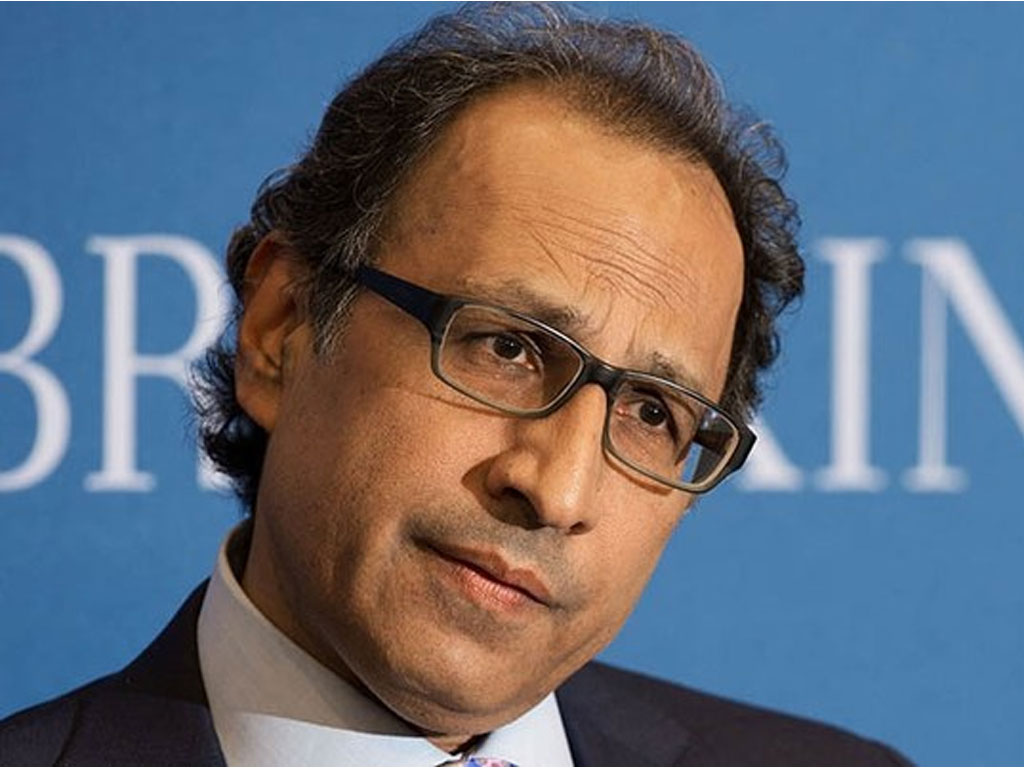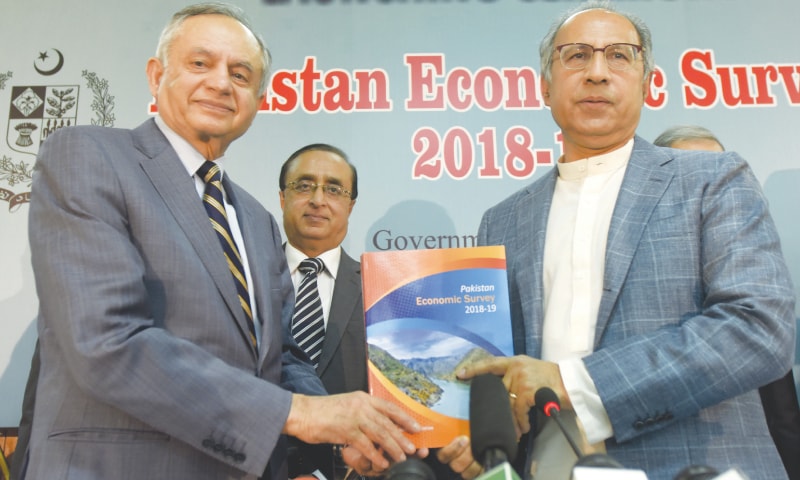Pakistan Economic Survey 2018-19
Overview of the Economy
The macroeconomic stability is a fundamental pre-requisite for sustained economic growth. Pakistan’s economy has experienced frequent boom and bust cycles. Typically, each cycle comprised of 3-4 years of relatively higher growth followed by a macroeconomic crisis which necessitated the stabilization programs. The inability to achieve sustained and rapid economic growth is due to structural issues which require effective monetary and fiscal measures to achieve macroeconomic stability.
The outgoing five-year plan has seen an average growth of 4.7 percent against the target of 5.4 percent. This growth can be characterized as consumption-led growth. The unplanned borrowing from different sources increased both private and public consumption resulting in higher debt repayment liabilities, which created severe macroeconomic imbalances. The investment did not pick up as higher demand was met primarily through imports leading to enormous rise in external imbalances. Due to low growth in revenues and the unplanned and unproductive expenditures, the fiscal deficit widened. The persistence of large fiscal and current account deficits and associated build up of public and external debt became the major source of macroeconomic imbalance.
The new elected government faces formidable macroeconomic challenges. The foremost challenge to the economy is the rising aggregate demand without corresponding resources to support it, leading to rising fiscal and external account deficits. To address the issue of severe macroeconomic instability and to put the economy on the path of sustained growth and stability, the government has introduced a comprehensive set of economic and structural reform measures.
As a short-term measure to get a breathing space, the government secured $ 9.2 billion from friendly countries to build up buffers and to ensure timely repayment of previous loans. The government has also taken some overdue tough decisions i.e. increase in energy tariffs to stop further accumulation of circular debt, reduction in imports through regulatory duties and withdrawal of some of the tax relaxations given in the last budget in order to arrest the deterioration in primary balance. These painful decisions were tough for the new elected government, but at the same time were necessary for economic stabilization. Recently, staff level agreement has been negotiated with the IMF to avail Extended Fund Facility for achieving macroeconomic stability. The staff level agreement will now be placed before the IMF Board for its approval.
The impact of macroeconomic adjustment policies, such as monetary tightening, exchange rate adjustment, expenditure control and enhancement of regulatory duties on non-essential imports, started to become visible this year. These steps have served to bring some degree of stability and have also helped in reducing economic uncertainty. However, the situation calls for sustained efforts.
 The outgoing fiscal year 2018-19 witnessed a muted growth of 3.29 percent against the ambitious target of 6.2 percent. The target was based upon sectoral growth projections for agriculture, industry, and services at 3.8 percent, 7.6 percent and 6.5 percent respectively. The actual sectoral growth turned out to be 0.85 percent for agriculture, 1.4 percent for industry and 4.7 percent for services.
The outgoing fiscal year 2018-19 witnessed a muted growth of 3.29 percent against the ambitious target of 6.2 percent. The target was based upon sectoral growth projections for agriculture, industry, and services at 3.8 percent, 7.6 percent and 6.5 percent respectively. The actual sectoral growth turned out to be 0.85 percent for agriculture, 1.4 percent for industry and 4.7 percent for services.
Some of the major crops witnessed negative growth as production of cotton, rice and sugarcane declined by 17.5 percent, 3.3 percent and 19.4 percent respectively. The crops showing positive growth include wheat and maize which grew at the rate of 0.5 percent and 6.9 percent respectively.
Other crops have shown growth of 1.95 percent mainly due to increase in production of pulses and oil seeds. Cotton ginning declined by 12.74 percent due to a decline in production of cotton crop.
Livestock sector has shown a growth of 4.0 percent. The growth recorded for the forestry is 6.47 percent which was mainly due to increase in production of timber in Khyber Pakhtunkhwa ranging from 26.7 to 36.1 thousand cubic meters.
The growth in industrial sector has been estimated at 1.40 percent. The mining and quarrying sector has witnessed a negative growth of 1.96 percent mainly due to reduction in production of natural gas (-1.98 percent) and coal (-25.4 percent). The large-scale manufacturing sector as per QIM data (from July 2017 to February 2018) shows a decline of 2.06 percent. Major decline has been observed in Textile (-0.27 percent), Food, Beverage & Tobacco (-1.55 percent), Coke & Petroleum Products (-5.50 percent), Pharmaceuticals (-8.67 percent), Chemicals (-3.92 percent), Non-Metallic Mineral Products (-3.87 percent), Automobiles (-6.11 percent) and Iron & Steel products (-10.26). On the other hand, the substantial growth in LSM has been observed in Electronics (34.63 percent) Engineering Products (8.63 percent) and Wood Products (17.84 percent). Electricity and gas subsector has grown by 40.54 percent, whereas the construction activity has declined by 7.57 percent.
The services sector has shown an overall growth of 4.71 percent. Wholesale and Retail Trade grew by 3.11 percent, while the Transport, Storage and Communication sector registered a growth of 3.34 percent mainly due to positive contribution by railways (38.93 percent), air transport (3.38 percent) and road transport (3.85 percent). Finance and insurance sector showed an overall growth of 5.14 percent. While the central banking has declined by 12.5 percent, a positive growth has been observed in scheduled banks (5.3 percent), non-scheduled banks (24.6 percent) and insurance activities (12.8 percent). The Housing Services has grown at 4.0 percent. The growth recorded in General Government Services is 7.99 percent which is mainly on account of increase in salaries of employees of federal, provincial and district governments. Other private services, comprising of various distinct activities such as computer related activities, education, health & social work, NGOs etc recorded a growth of 7.05 percent.
The total investments as a percentage of GDP was recorded at 15.4 percent against the target of 17.2 percent. The fixed investment as percentage of GDP remained 13.8 percent against the target of 15.6 percent, while public and private investments remained at 4.0 and 9.8 percent against the target of 4.8 and 10.8 percent respectively. The National Savings remained at 10.7 percent of GDP against the target of 13.1 percent. The consumption growth was recorded at 11.9 percent compared to 10.2 percent growth recorded last year. As percentage of GDP, it increased to 94.8 percent compared to last year’s figure of 94.2 percent.
On the demand side, the exports declined by 1.9 percent despite exchange rate depreciation, while imports declined by 4.9 percent. This helped in reducing the trade deficit by 7.3 percent during July-April FY 2019 while it had shown an expansion of 24.3 percent during the corresponding period of last year. The workers’ remittances played a major role in containing current account deficit to 4.03 percent of GDP. The CAD showed a contraction of 27 percent during July-April of the current year while it had expanded by 70 percent during the corresponding period of last year. The State Bank is
following a contractionary policy to anchor the aggregate demand and address rising inflation on the back of high fiscal and current account deficits.
The next year, agriculture sector is likely to rebound under Prime Minister’s Agriculture Emergency Program. The water availability is expected to be better as compared to current year. There is substantial increase in Agriculture Credit disbursement which is recorded at Rs. 805 billion during July-April FY2019 compared to Rs.666.2 billion during the corresponding period of last year, posting a growth of 20.8 percent. The import of agriculture machinery has recorded a growth of 10.95 during July-April FY2019 which is a good indicator. The base effect will also support growth in agriculture.
The Large-Scale Manufacturing sector which posted a negative growth this year is likely to rebound on the back of expected growth in agriculture sector along with government initiatives in the construction sector, SMEs sector and tourism and automobile sector. Both, agriculture and LSM sector growth is likely to have a good impact on services sector on account of goods transport services linked to agriculture and wholesale trade.
The fiscal tightening and the rising inflation on account of increasing utility prices, rationalization of taxes, measures to reduce the primary balance, and any further exchange rate adjustments, along with higher oil prices, protectionists tendencies in some of the economies and tightening monetary conditions in the developed countries leading to lower capital inflows will remain downside risk.
Source: Ministry of Finance
BOX
Pakistan Economic Survey 2018
Highlights
- The provisional GDP growth rate for FY2019 is estimated at 3.29 percent on the basis of 0.85, 1.40 and 4.71 percent growth in agricultural, industrial and services sectors respectively.
- The provisional agriculture sector growth is estimated at 0.85 percent. The crops sector has witnessed negative growth of 4.4 percent during FY2019 mainly due to negative growth (-6.6 percent) of important crops.
- Livestock sector has shown a growth of 4.0 percent while the growth of forestry remained at 6.47 percent due to increase in production of timber in Khyber Pakhtunkhwa in the range of 26.7 to 36.1 thousand cubic meters.
- The provisional growth in industrial sector has been estimated at only 1.40 percent mainly due to decline by 2.06 percent in large scale manufacturing sector and by 1.96 percent in mining and quarrying sector.
- The services sector posted a growth of 4.71 percent.
- Wholesale and Retail Trade sector grew at a rate of 3.11 percent
- Transport, Storage and Communication sector has registered a growth of 3.34 percent due to positive contribution of railways (38.93 percent), air transport (3.38 percent) and road transport (3.85 percent).
- Finance and insurance sector showed an overall growth of 5.14 percent, despite a decline (of 12.5 percent) in value add of the central bank.
- The Housing Services grew by 4.0 percent and the General Government Services by 7.99 percent.
- The provisional estimates of Gross Fixed Capital Formation (GFCF) for the year FY2019 stands at Rs.5340.0 billion with a growth of 1.9 percent as compared to FY2019.
- In private sector, the GFCF is estimated at Rs.3796.1 billion while in Public Sector it posted a growth of 9.8 percent.
- External sector has shown improvement after dismal performance in FY2018.
- Policy intervention has reduced current account by 27 percent to $11.56 billion during July-April FY2019 compared to expansion of 70 percent to $15.9 billion of the corresponding period last year.
- Imports have been restricted by 5 percent to $ 44 billion compared to $46 billion last year.
- Trade deficit reduced by 7.4 percent to $ 23.9 billion against $25.8 billion last year.
- Remittances improved by 8.45 percent to $ 17.8 billion against 16.4 billion last year
- GDP growth in FY 2018 was 3.3 percent, on the back of Agriculture at 0.85 percent, Industry1.4 percent and Services 4.7 percent.
- The major factor in limiting the growth of Agriculture was water shortage both for Rabi and Khariff crops which badly impacted production of major crops such as Cotton, Rice, Sugar, which remained behind their target productions.
- The cotton crop registered a decline of 17.4 percent to 9.86 million bales
- Rice production remained short by 3.3 percent to 7.2 million ton
- Sugar production stood at 67.2 million ton and witnessed a decline 19.4 percent
- Wheat crop showed some nominal growth of 0.5 percent to 25.19 million ton
- Maize crop showed good improvement of 6.9 percent to 6.3 million ton.
- Industrial sector showed moderate growth of 1.4 percent due to decline of Large Scale Manufacturing Sector (LSM) by 2.06 percent due to reduced aggregate demand.
- Mining and construction sector growth declined by 1.9 and 7.6 percent, respectively.
- Services sector was affected by the decline in Commodity Producing Sector and registered a less than expected growth at 4.7 percent.
- General government services and other private services contributed to services sector by surpassing the target and registered a growth of 8 percent and 7 percent, respectively.
- Fiscal deficit despite increased interest payment was managed at 5.0 percent of GDP during the first nine months of CFY2019.
- The FBR collections remains lower due to court stay on mobile phones, reduction in personal income tax rates and reduced imports.
- Government has separated the tax policy function of FBR from tax administration
- Creation of Specialized Tax Unit for foreign assets.
- Tax broadening measures.
- Extensive use of information technology for data mining, detection of under reporting, spotting tax evaders and get more people into tax net.
- These efforts have helped in expansion of tax filers to more than1.87 million.
- During July-May, FY2019 inflation increased to 7.2 percent due to reversal in global fuel prices, whose impact has been translated on domestic prices as well exchange rate adjustments. The Food inflation during this period rema ins low to 4.23 percent.
- The SBP has adopted contractionary monetary policy stance by raising discount rate to 12.25 percent to anchor inflationary pressures and to stabilize the macroeconomic situation.
- The flows of credit to private sector has seen expansion of Rs 581 billion during July – 26 April 2019 showing year on year growth of 15 percent over last year.
- -The agriculture credit disbursement increased by 21 percent to Rs.805 billion during July-March FY 2019 over last year.
- The actual performance of economy next year will be seen in due course of time in view of various initiatives in the field of housing, construction, SME, information technology and tourism as well as strong expansion in credit to private sector and uninterrupted supply of gas and power at competitive rates.
- The energy sector has also shown improved performance during this year.
- -The installed capacity improved by 2.5 percent to 34,282 MW compared to last year 33,433 MW, while generation increased by 2.1 percent to 87,324 GWh from 85,552 GWh.
- The government is targeting to create 10 million jobs in five years. The private sector will play a key role in creation of jobs supported by the government. The Key areas are
- Naya Pakistan Housing Program by building 10 million houses
- 10 billion Tsunami-Government country wide tree plantation Program
 Jahangir's World Times First Comprehensive Magazine for students/teachers of competitive exams and general readers as well.
Jahangir's World Times First Comprehensive Magazine for students/teachers of competitive exams and general readers as well.



